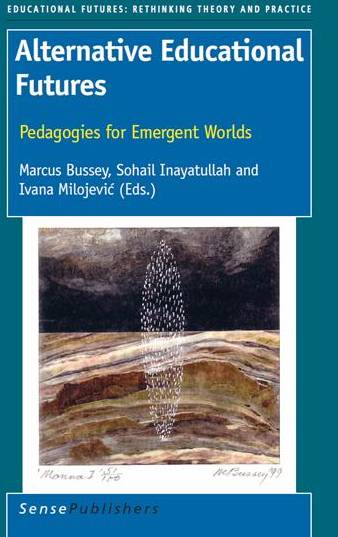Global Transformations and World Futures: Knowledge, Economy and Society, Vol 1 and 2 | Edited by Sohail Inayatullah | Oxford, EOLSS Publishers, 2009 | ISBN: 978–1–84826–666–7 (hard copy) | ISBN: 978–1–84826–216–4 (Adobe e-book Reader)
The overall structure of this Book is divided into three areas: (1) Global transformations in Knowledge: Social and Cultural issues. Issues such as the nature of global science, the challenge of building real communities in a virtual world, and the transition from an information economy to a communicative economy are explored. (2) The Global Economy. In this area, alternative definitions of globalization are developed – globalization as if the entire globe mattered – and the role of large players such as multinational are explored. Furthermore, globalization and development are linked, and the prospects for development in the South are evaluated. (3) World Futures. In this area, the theories and methods of the emerging discourse of Futures Studies are explored, particularly as applied to issues of gender and world futures; sustainable education; and, the futures of the United Nations.
The purpose for the development of this book has not changed over the past few years. Indeed, continued global transformation have made the analysis and articulate of world futures even more important. Most of the authors in this Book make the argument that humanity is at a juncture. While there are macro patterns that define what is possible in the next fifty or so years – trends in technology, structure of world power, for example – through human agency, transformations can be steered. Agency is possible and desirable. To discern how and where to influence the world system most wisely, maps of the future are required. My introductory chapter essentially maps the futures of humanity. The map has four dimensions. The first dimension is globalization. The second dimension is focused on foundational transformations in nature, truth, reality and Man. The third dimension develops scenarios of the future. These include the Globalized Artificial Society; the Communicative-Inclusive; The Continued Growth Business as Usual, and the Societal Collapse. The fourth dimension is an exploration of a preferred future – a post-globalization future.
Chapters:
- Global transformations and world futures : knowledge, economy & society
- Global transformations in knowledge : social and cultural issues
- Global science
- Non-Western science : mining civilizational knowledge
- Global management of knowledge systems
- Tranformations of information society
- From the information era to the communicative era
- Building “real” and “virtual” human communities in the 21st century
- Navigating globalization through info-design, an alternative approach to understanding cyberculture
- The global economy
- Multinational corporations
- Global movement of labor
- The internet and political economy
- Economics of transition
- Global business ethics
- Globalization as if the entire globe mattered : the situation of minority groups
- Strategies to eradicate poverty : an integral approach to development
- North-North, North-South, and South-South relations
- World futures : trends and transformations in state, education and cultural ecology
- Epistemology and methodology in the study of the future
- The grand patterns of change and the future
- Multilayered scenarios, the scientific method and global models
- The futures of the United Nations and the world system
- Globalization and information society-increasing complexity and potential chaos
- Globalization, gender, and world futures
- Neo-humanism, globalization, and world futures
- Sustainable education : imperatives for a viable future
- Financial resources policy and management : world economic order
- International commodity policy : a new concept for sustainable development
- Global sustainability : rhetoric and reality, analysis and action : the need for removal of a knowledge-apartheid world
- Economic assistance to developing countries and sustainable world population
- Capacity development and sustainable human development.
Access via publisher:
UNESCO in partnership with EOLSS [Encyclopedia of Life Support Systems]

